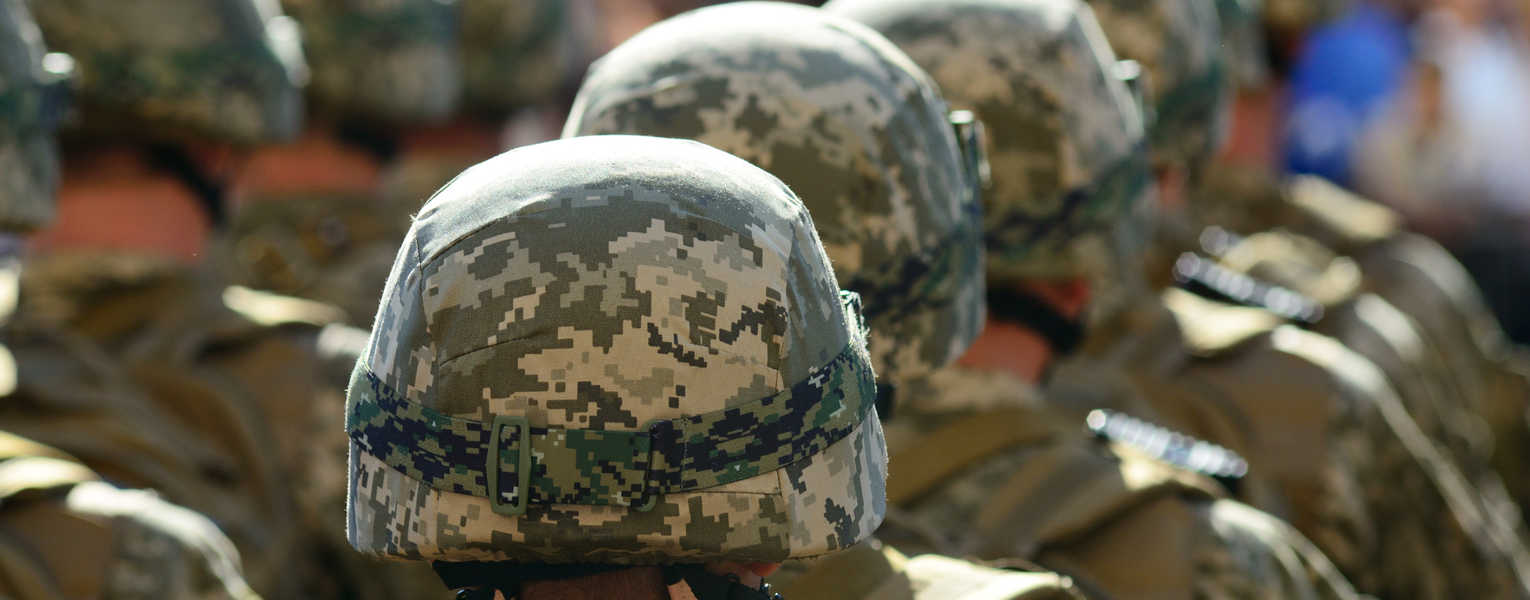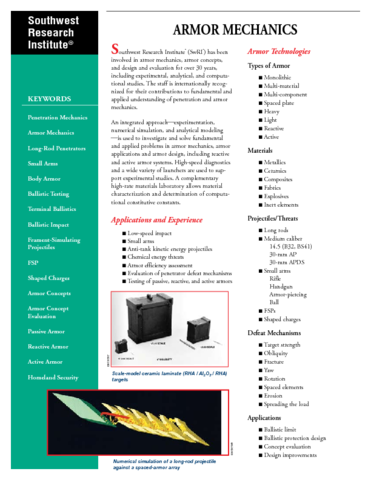For more than 30 years, SwRI staff has been using an integrated approach, including experimentation, numerical simulation, and analytical modeling, to investigate and solve fundamental and applied problems in:
- Armor mechanics
- Armor applications
- Armor design
- Reactive systems
- Active systems
- Armor concepts
- Armor evaluation and studies
- Experimental
- Analytical
- Computational
High-speed diagnostics and a wide variety of launchers support experimental studies. A complementary high-rate materials laboratory allows material characterization and determination of computational constitutive constants.
Armor Mechanics Applications and Experience
- Low-speed impact
- Small arms
- Anti-tank kinetic energy projectiles
- Chemical energy threats
- Armor efficiency assessment
- Evaluation of penetrator defeat mechanisms
- Testing of passive armor, reactive armor, and active armor
Armor Technologies
Types of Armor
- Monolithic
- Multi-material
- Multi-component
- Spaced plate
- Heavy
- Light
- Reactive
- Active
Armor Materials
- Metallics
- Ceramics
- Composites
- Fabrics
- Explosives
- Inert elements
Projectiles/Threats
- Long rods
- Medium caliber
- 14.5 (B32, BS41)
- 30-mm AP
- 30-mm APDS
- Small arms
- Rifle
- Handgun
- Armor-piercing
- Ball
- Fragment-simulating projectiles (FSPs)
- Shaped charges
Defeat Mechanisms
- Target strength
- Obliquity
- Fracture
- Yaw
- Rotation
- Spaced elements
- Erosion
- Spreading the load
Armor Mechanics Applications
- Ballistic limit
- Ballistic protection design
- Armor concept evaluation
- Design improvements
- Response of two types of aluminum alloys to impact by a lead-filled ball round
Armor Mechanics Facilities
- Indoor ballistics range
- 20- to 30-mm high-performance gun system
- 50-mm high-performance cannon (impact velocities up to ~2.0 km/s)
- Outdoor test areas, up to 1,000 yards
- Storage, handling, and application of explosives
- Fully equipped instrumentation trailer (high-speed data acquisition of pressure, strain, displacement, etc.)
- Flash radiography
- High-speed video (up to 60,000 frames per second)
- Ultra-high-speed digital imaging (up to 100 million frames per second)


